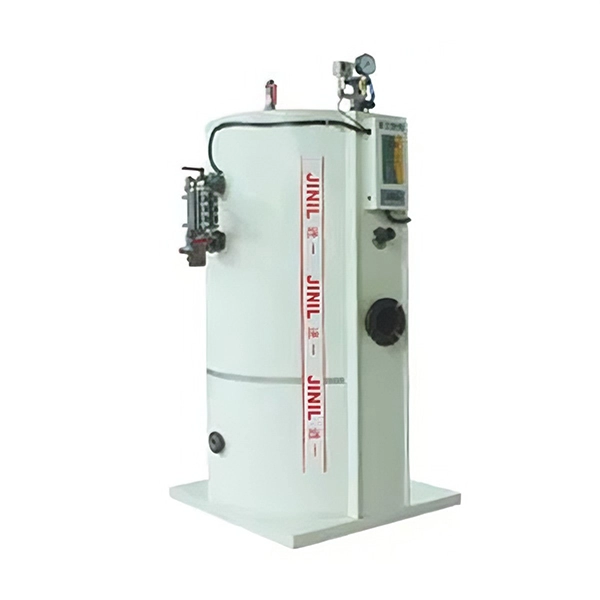
A vertical oil-fired steam boiler is a type of industrial boiler that uses oil as a fuel source to heat water and produce steam in a vertically oriented vessel. They're particularly valued for their compact design, which makes them a great solution for applications where space is limited.
A Vertical Oil-fired Steam Boiler is a compact and efficient steam generation system designed to convert fuel oil into high-pressure steam for industrial, commercial, and institutional applications. Unlike horizontal boilers, the vertical design features a smaller footprint, making it ideal for facilities with limited space.
These boilers operate by burning fuel oil in a vertical furnace, where heat is transferred through the water-tube or fire-tube system to produce steam. They are widely used in industries such as food processing, chemical manufacturing, textile production, and heating systems, offering a reliable source of steam for processes, heating, and sterilization.
Key advantages include:
Space-saving design - vertical configuration reduces floor area requirements.
High efficiency - optimized combustion and heat transfer ensure minimal fuel consumption.
Durability - robust construction with corrosion-resistant materials extends boiler life.
Easy maintenance - accessible design simplifies inspection and cleaning.
At its core, a vertical oil-fired steam boiler operates on the principle of heating water to its boiling point to produce steam. The heat is generated by burning fuel oil in a combustion chamber.
Vertical Orientation: Unlike horizontal boilers, the main shell and tubes are arranged vertically. This design often leads to a smaller footprint.
Combustion Chamber: Located at the bottom, where the fuel oil is atomized and ignited by a burner.
Heat Exchanger (Fire Tubes or Water Tubes): Heat from the combustion gases is transferred to the water.
Fire-tube boilers: Hot gases pass through tubes surrounded by water.
Water-tube boilers: Water passes through tubes surrounded by hot gases. Vertical boilers commonly use fire tubes.
Chimney/Flue Gas Outlet: For exhausting combustion gases.
Water Level Controls: Essential for safety and efficient operation.
Safety Valves: To release pressure if it exceeds safe limits.
Beyond the basic structure, a vertical oil-fired steam boiler has several critical components that ensure its safe and efficient operation:
Pressure Vessel: A durable, sealed container, typically made of steel, that holds the water and steam under high pressure.
Burner: The device that mixes fuel oil and air for combustion. Its efficiency directly impacts the boiler's performance.
Combustion Chamber: The area where the fuel is burned. It's designed to contain the high-temperature reaction and is insulated to prevent heat loss.
Water Level Indicator: A gauge that allows operators to monitor the water level within the boiler. Maintaining the correct water level is crucial for preventing damage to the boiler.
Safety Valves: These are critical safety features that automatically open to release steam if the pressure inside the boiler exceeds a safe limit, preventing a potential explosion.
A vertical oil-fired boiler operates on the principle of heat transfer. The basic process involves:
Combustion: Oil is fed into a burner at the bottom of the boiler. The burner mixes the oil with air and ignites it, creating a hot flame.
Heat Transfer: The hot flue gases from the combustion chamber travel up through a series of fire tubes surrounded by water. The heat from these gases is transferred through the walls of the tubes to the surrounding water.
Steam Generation: As the water absorbs the heat, it eventually reaches its boiling point and turns into steam. The steam collects in the upper part of the boiler, known as the steam drum.
Steam Outlet: The high-pressure steam is then channeled out of the boiler through a main valve and piping system for use in various industrial processes or heating applications.
Exhaust: The cooled flue gases are vented safely through a chimney or stack.
Vertical oil-fired steam boilers are used in a variety of settings, particularly where a compact, reliable steam source is needed. Their applications include:
Textile Industry: Providing steam for dyeing, drying, and other processes.
Food Processing: Used for cooking, sterilization, and pasteurization.
Hospitals and Laundries: Supplying steam for sterilization and laundry services.
Small-Scale Manufacturing: Powering machinery and providing process heat.
Commercial Buildings: Used for space heating and domestic hot water supply.
Take every customer request seriously.

Shuxin
Electromechanical
+86 15516359168
shuxin@sxburner.com
Room 504, Building 11, Wuzhou International Industrial Expo City, Old National Highway 310, Xigong District, Luoyang City, Henan Province
+86 15516359168
shuxin@sxburner.com
Room 504, Building 11, Wuzhou International Industrial Expo City, Old National Highway 310, Xigong District, Luoyang City, Henan Province